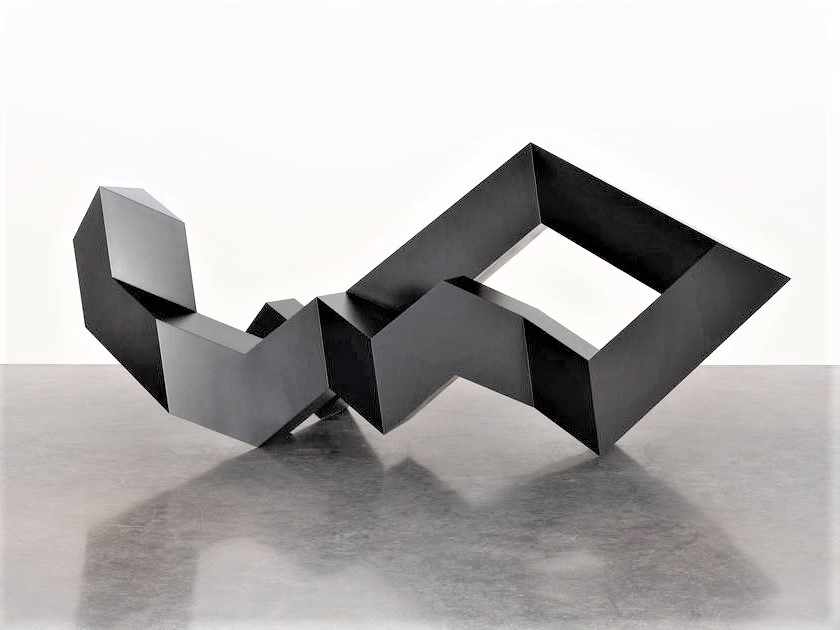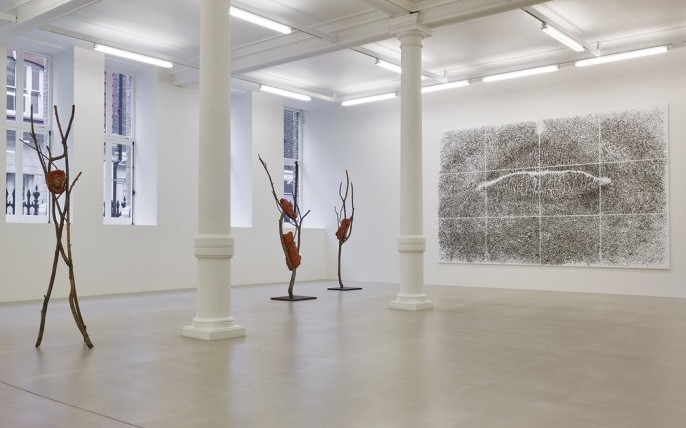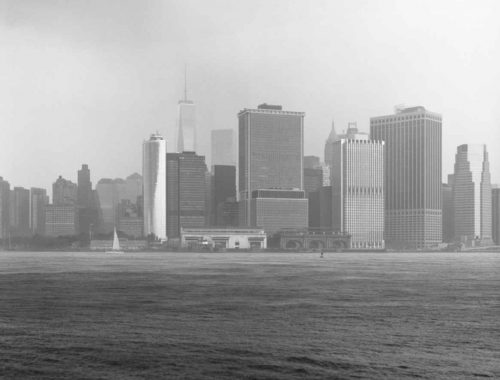
TONY SMITH – An ambulatory viewing experience
Shaped by his training and prior career as an architect, Smith’s work is animated by a dynamic concept of space and a commitment to sculpture as an object to be catalyzed by the direct engagement of the human body.
Possessing no traditional front or back and occupying non-linear planes of space, Smith’s sculptures reward an ambulatory viewing experience, offering a range of perspectives and understandings as one circulates the work.
His monumental sculptures are among Minimalism’s most iconic forms. Smith developed his style by exploring issues of scale, material, and the geometry of nature in studio prototypes for fabricated sculptures. The Minimalist works he created—which he called “interruptions in an otherwise unbroken flow of space”—were included in the genre-defining “Primary Structures” exhibition of 1966.
Before turning to sculpture, Smith studied at the Art Students League under George Grosz and Vaclav Vytlacil and worked with architect Frank Lloyd Wright in Chicago. In New York, he became friends with leading Abstract Expressionists Barnett Newman, Jackson Pollock, Mark Rothko and Clyfford Still, who encouraged each other to push the limits of abstraction.
Smith’s work, however, was more closely aligned with a younger generation of artists, including Carl Andre, Sol LeWitt and Donald Judd, who would define American art in the coming decades.
Tony Smith considered his process to be intuitive, his work resting close to the unconscious and exploring themes of spirituality and presence in a synthesis of geometric abstraction and expressionism. As the artist states: “I like a certain amount of mystery involved, which demands involvement on the part of the person seeing it. I think the guise of the work has something to do with the kinetic quality. It demands a certain amount of action.”
You May Also Like

GIUSEPPE PENNONE _ “EBBI, AVRO, NON HO” AT MARIAN GOODMAN LONDON
29/09/2020
ELIZABETH PEYTON _ OFF BEAT PORTRAITS
18/08/2020

